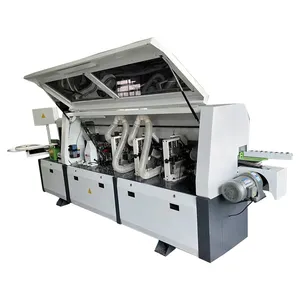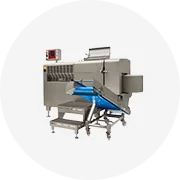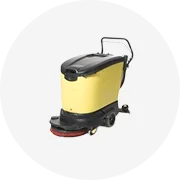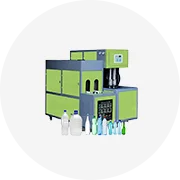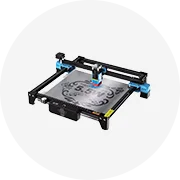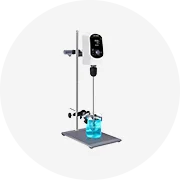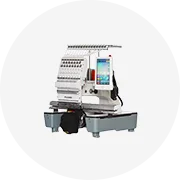Phổ biến trong ngành của bạn

4 tời cao tùy chỉnh thực hiện Dot chứng nhận 50 tấn 75 tấn rotator wrecker cơ thể cho nhiệm vụ nặng nề người phá hủy cơ thể
38.000,00 US$ - 65.000,00 US$
Đơn hàng tối thiểu: 1 Đơn vị
Vận chuyển mỗi chiếc: 4.800,01 US$


55 Gallon Drum Rotator Drum Rotator Phụ Tùng Xe Nâng
220,00 US$ - 240,00 US$
Đơn hàng tối thiểu: 1 Đơn vị


75 tấn 100 tấn 4 đến 7 tời rotator cơ thể phá hủy nặng
38.000,00 US$ - 95.000,00 US$
Đơn hàng tối thiểu: 1 Đơn vị
Vận chuyển mỗi chiếc: 4.800,01 US$


Tow Xe Tải 10 Tấn RC Người Phá Hủy 3 Tấn 5ton 8ton Thấp Giường Người Phá Hủy Sử Dụng Người Phá Hủy Chiếc Xe Tải Kéo Cho Bán
23.000,00 US$ - 33.000,00 US$
Đơn hàng tối thiểu: 1 Đơn vị


Máy Xúc Nhỏ 1-5T Thủy Lực Nghiêng Nhanh Máy Xúc Nghiêng Rotator
550,00 US$ - 3.500,00 US$
Đơn hàng tối thiểu: 1 Cái


2021 Xe Buýt Kéo 30ton Người Phá Hủy Xe Tải Shacman Rotator Tow Xe Tải Phá Hủy
76.000,00 US$ - 76.900,00 US$
Đơn hàng tối thiểu: 1 Đơn vị

SINOTRUK HOWO 8X4 Heavy Rotator Người Phá Hủy 30 Tấn Kéo Xe Tải Để Bán
76.000,00 US$ - 76.500,00 US$
Đơn hàng tối thiểu: 1 Đơn vị

Bán nóng sinotruck HOWO 8*4 371HP xoay 360 độ 30 tấn nâng người phá hủy hạng nặng để bán
30.000,00 US$ - 35.000,00 US$
Đơn hàng tối thiểu: 1 Đơn vị

HOWO nhiệm vụ nặng nề phẳng trượt rotator kéo Xe tải kéo người phá hủy gắn 30ton cần cẩu nền tảng người phá hủy xe tải 6x4
14.500,00 US$ - 15.000,00 US$
Đơn hàng tối thiểu: 1 Đơn vị

Ckd skd 20 tấn 25 tấn 30 tấn 40 tấn 50 tấn 60 tấn 360c xoay kéo xe tải bánh xe nâng kéo xe tải phá hủy 20 tấn Bộ dụng cụ sự cố
65.000,00 US$ - 69.000,00 US$
Đơn hàng tối thiểu: 1 Bộ

Shacman nhiệm vụ nặng nề trượt rotator kéo xe tải người phá hủy gắn 25ton 30 tấn nền tảng người phá hủy kéo xe tải 8x4 người phá hủy kéo xe tải
3.600,00 US$ - 3.700,00 US$
Đơn hàng tối thiểu: 1 Đơn vị

Nhà Máy Giá 8x4 sinotruk HOWO khẩn cấp người phá hủy kéo xe tải 30ton 50ton 60ton bánh xe nâng 360 rotator kéo người phá hủy
45.999,00 US$ - 55.999,00 US$
Đơn hàng tối thiểu: 1 Đơn vị
Vận chuyển mỗi chiếc: 26.827,00 US$
Các danh mục hàng đầu
Giới thiệu về 30ton rotator phá hủy
Đạt được độ chính xác và hiệu quả trong hoạt động canh tác và trồng trọt với sự hỗ trợ của sức mạnh và tiên tiến. 30ton rotator phá hủy từ Alibaba.com. Những độc đáo và tuyệt đẹp. 30ton rotator phá hủy phù hợp để nuôi ở mọi quy mô và quy mô. Đây là những hỗ trợ to lớn trong nhiều hành động cần thiết tại một trang trại như gieo hạt và duy trì diện tích canh tác hàng ngày. Những cái này. 30ton rotator phá hủy sử dụng công nghệ mạnh mẽ giúp giảm đáng kể khả năng xảy ra sự cố. Chúng cực kỳ dễ bảo trì và không phải chi nhiều cho việc bảo trì.
Chọn từ một loạt các hiệu quả và định hướng hiệu suất. 30ton rotator phá hủy hỗ trợ hoàn thành một số hoạt động riêng biệt. Trong số những thứ khác, những thứ này giúp làm tơi đất, đào rãnh, làm cỏ và xới vườn. Những cái này. 30ton rotator phá hủy có sẵn ở nhiều kiểu máy khác nhau và đi kèm với động cơ mạnh mẽ, hiệu quả, không ồn ào và có tốc độ làm việc nhanh hơn. Những cái này. 30ton rotator phá hủy có khung gầm chắc chắn và được cung cấp ở các phiên bản điện, xăng và diesel để có trải nghiệm phù hợp.
Chọn từ nhiều loại. 30ton rotator phá hủy trên Alibaba.com để có trải nghiệm liền mạch có thể giúp nâng cao năng suất và lợi nhuận. Chọn quyền. 30ton rotator phá hủy đa dạng về mẫu mã, màu sắc, dung lượng và tính năng. Các sản phẩm tiên tiến này có mức độ an toàn cao và trang bị động cơ 4 thì có hộp số tự động hoặc bán tự động. Những cái này. 30ton rotator phá hủy có thể được sử dụng để trồng trọt ở bất kỳ loại địa hình và điều kiện khí hậu nào, khiến chúng trở thành sản phẩm bắt buộc đối với bất kỳ ai tham gia vào lĩnh vực nông nghiệp.
Alibaba.com cung cấp nhiều lĩnh vực quyến rũ. 30ton rotator phá hủy để phù hợp với ngân sách và đặc điểm kỹ thuật của bạn. Với những mức chiết khấu hấp dẫn ,. Các nhà cung cấp 30ton rotator phá hủy có thể cân nhắc mua với số lượng lớn và tích trữ những chiếc máy tuyệt vời này. Nâng cao kinh nghiệm trồng trọt của bạn ngay hôm nay.
Chọn từ một loạt các hiệu quả và định hướng hiệu suất. 30ton rotator phá hủy hỗ trợ hoàn thành một số hoạt động riêng biệt. Trong số những thứ khác, những thứ này giúp làm tơi đất, đào rãnh, làm cỏ và xới vườn. Những cái này. 30ton rotator phá hủy có sẵn ở nhiều kiểu máy khác nhau và đi kèm với động cơ mạnh mẽ, hiệu quả, không ồn ào và có tốc độ làm việc nhanh hơn. Những cái này. 30ton rotator phá hủy có khung gầm chắc chắn và được cung cấp ở các phiên bản điện, xăng và diesel để có trải nghiệm phù hợp.
Chọn từ nhiều loại. 30ton rotator phá hủy trên Alibaba.com để có trải nghiệm liền mạch có thể giúp nâng cao năng suất và lợi nhuận. Chọn quyền. 30ton rotator phá hủy đa dạng về mẫu mã, màu sắc, dung lượng và tính năng. Các sản phẩm tiên tiến này có mức độ an toàn cao và trang bị động cơ 4 thì có hộp số tự động hoặc bán tự động. Những cái này. 30ton rotator phá hủy có thể được sử dụng để trồng trọt ở bất kỳ loại địa hình và điều kiện khí hậu nào, khiến chúng trở thành sản phẩm bắt buộc đối với bất kỳ ai tham gia vào lĩnh vực nông nghiệp.
Alibaba.com cung cấp nhiều lĩnh vực quyến rũ. 30ton rotator phá hủy để phù hợp với ngân sách và đặc điểm kỹ thuật của bạn. Với những mức chiết khấu hấp dẫn ,. Các nhà cung cấp 30ton rotator phá hủy có thể cân nhắc mua với số lượng lớn và tích trữ những chiếc máy tuyệt vời này. Nâng cao kinh nghiệm trồng trọt của bạn ngay hôm nay.


